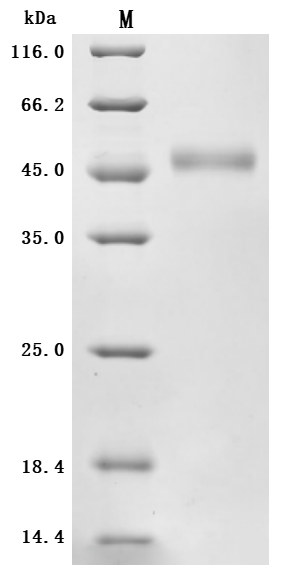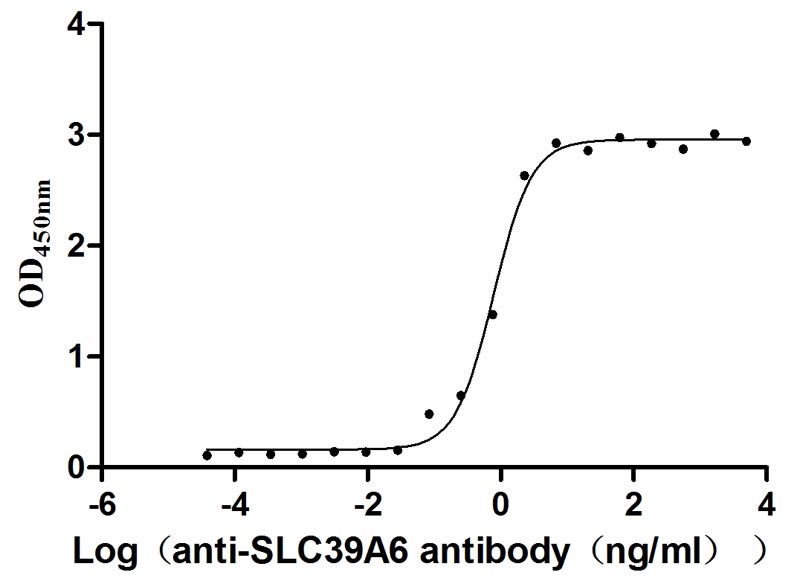This Human ZIP6 (SLC39A6, LIV-1) recombinant protein was produced in Baculovirus, where the gene sequence encoding Human ZIP6 (29-325aa) was expressed with the C-6xHis tag. The purity of this ZIP6 protein was greater than 95%. The activity was validated.
The SLC39A6 gene was originally discovered in human breast cancer cell lines, and it was later shown that SLC39A6 belongs to a member of the zinc transporter subfamily. The main function of SLC39A6 is to transport zinc ions from the extracellular to the cytoplasmic matrix to increase the level of zinc ions in the matrix and maintain the homeostasis of intracellular zinc ions. Another study reported that SLC39A6 can also be involved in embryonic development and the epithelial-to-mesenchymal transition (EMT) involved in tumor migration, suggesting that SLC39A6 is closely related to the transmembrane transport of zinc ions in addition to In addition, it may also be closely related to the progression of many other diseases such as tumors.








